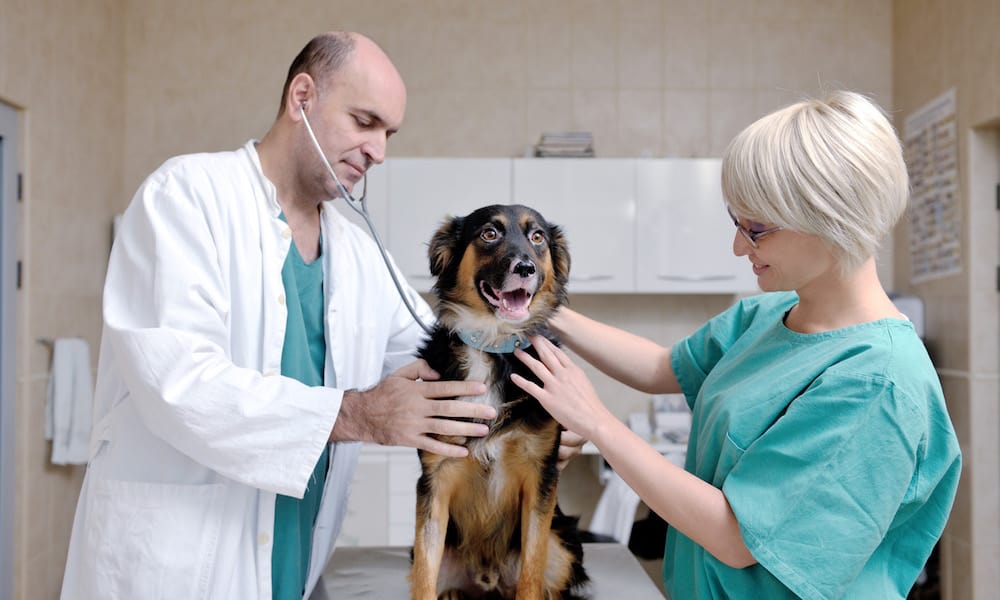Veterinary practices face the same challenges as any business, especially in a competitive landscape where pet owners have more choices than ever. Marketing is an essential activity for practices both large and small to retain clients, reach more pet owners, and thrive.
As a veterinarian, you know that marketing for your veterinary practice is essential to the success of your business. You need a marketing strategy to succeed in your vet clinic. But what does a strong veterinary marketing plan look like?
What is a veterinary marketing plan?

A veterinary marketing plan is a strategic document that outlines the goal, strategies, and tactics that will be used to promote a veterinary practice. The plan should account for the unique characteristics of the industry, including the emotional customer connection to animals and the typically as-needed nature of veterinary services. A strong veterinary digital marketing plan focuses on increasing brand awareness, building customer loyalty, and ensuring a positive customer experience.
Here are five key veterinary marketing plan components to include:
1. Understand your target audience clearly
Veterinary clinics need to understand their target audience and target market. This involves analyzing data and feedback about pet owner demographics, preferences, and consumer behaviors.
Important factors:
-
Type of veterinary practice (e.g., small animal, large animal)
-
Geographic location and local community demographics
-
Pet owner preferences, such as holistic care or convenient appointment times
Aligning your messaging with what your customer values creates an effective advertising campaign that highlights your unique selling proposition. For example, if your target audience prioritizes wellness, emphasize vaccine services and preventative care through education.
2. Set a budget for Vet marketing activities

Your budget should be a percentage of your annual revenue, typically 2–5%. This investment covers both digital and offline advertising, from print and newspaper ads to online social media marketing and email marketing campaigns.
Include in your marketing strategy:
-
Website and web design costs
-
Content creation for blogs and landing pages
-
Paid ads, such as Google Search or local SEO campaigns
-
Creation of business cards, brochures, and promotional materials
Using tools like analytics and artificial intelligence can help optimize spending and increase return on investment.
3. Unlock the power of pet owner education

When clients receive information they trust, such as printed or digital handouts, they’re more likely to comply with treatments, improving patient outcomes and your reputation. Sharing education positions your team as experts and enhances credibility.
Educational resources can also fuel lead generation by drawing traffic to your landing pages via search engine rankings. When clients share positive customer service experiences, it encourages word of mouth referrals and boosts visibility.
4. Open up the lines of communication

Modern customer relationship management requires real-time communication across multiple touchpoints. This can include email, social media, and a mobile-friendly website. Tools like ALLYDVM offer features like a client-facing mobile app, onboarding systems, and an integrated loyalty program.
Client communication not only enhances the customer experience but also supports reputation management. Timely updates and reminders reduce no-shows and help pet owners feel valued.
5. Optimize your vet marketing plan with experts

Whether it’s marketing automation or intelligent data collection, technology enables practices to refine efforts and outpace competition. Using software like Google Business Profile listings and search engine optimization platforms increases your visibility on the search engine results page.
Working with veterinarian marketing professionals—like LifeLearn—ensures your practice uses tools and research effectively to meet marketing goals.
Don’t forget to:
-
Conduct regular keyword research
-
Evaluate analytics and algorithm performance
-
Update content for accessibility and user experience
LifeLearn’s custom solutions integrate everything from storytelling content to automation platforms, helping companies navigate the digital marketing world.
Final Thoughts
A comprehensive veterinary marketing plan blends technology, knowledge, and experience to build your brand, engage your target audience, and elevate your practice. By investing in the right tools, building trust through education, and engaging in meaningful conversation with your community, your company can stand out in today’s competitive veterinary marketing landscape.
Start with LifeLearn’s free consultation and see how we can help with your next advertising campaign or digital investment.





